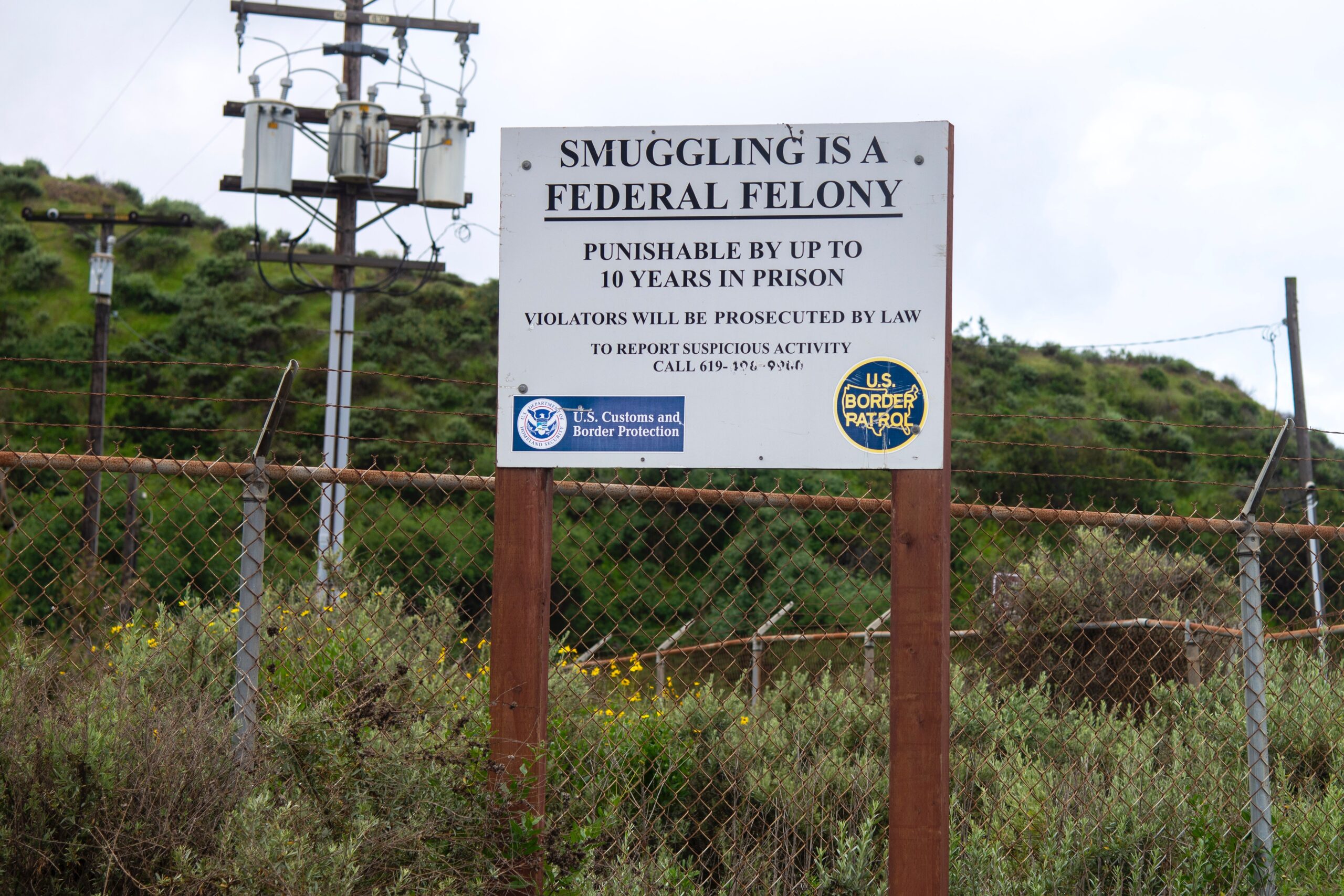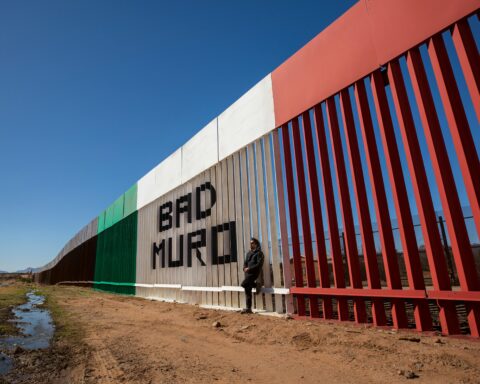On the very same January day that a family of four from India died while trying to cross illegally from Manitoba to the U.S., six Mexicans were attempting a similar crossing some 1,500 kilometres away on the B.C.-Montana border.
In both cases, human smugglers were instrumental in organizing the crossings.
While the fate of the Patel family from Gujarat has garnered international media interest, there has been far less attention paid to the Mexicans who crossed the border on foot in freezing temperatures. Border officials say such crossings are not uncommon.
On January 19 this year, at about 5 a.m., the U.S. Border Patrol (USBP) learned through electronic surveillance that a group of people was attempting to cross into the U.S. illegally on foot near Rexford, Montana. Soon after, a border patrol agent stopped a suspected SUV with a Washington licence plate transporting six undocumented Mexicans.
Authorities accused the 51-year-old female driver and the 61-year-old male front passenger, both originally from Honduras but with legal permanent residence in Seattle, of illegal transport of aliens and conspiracy to transport aliens. Both carry a maximum sentence of 10 years in jail and a $250,000 fine.
According to USBP documents, the driver admitted knowingly transporting illegal aliens for compensation. She said she was instructed to travel from Seattle, Washington to Eureka, Montana to a specific location that had been entered into her phone GPS and pick up four people.
She also admitted she paid her passenger $1,000 USD to accompany her as part of the scheme, the District Court states. Both accused have pleaded not guilty.
Documents claim that the six Mexicans, four women and two men, whose surnames do not refer to a direct family relationship, declared that they paid between $180 and more than $7,000 each to enter illegally into the U.S.
One of them said she paid $1,300 to the smuggler. She knew a vehicle would be picking her up and referred to the driver as “Brownie”. Another paid $4,000 to be smuggled and said she owed another $5,000 when she arrived in North Carolina.
Another immigrant claimed to have paid $180 for the service and planned to work off the reminder, though she didn’t know how much that would be. She said she didn’t know anything about the driver and passenger.
Two more claimed to have paid, in Mexican pesos, approximately $975 and $7,324 Cdn each. According to official documents, the last immigrant did not give any information on payment, only details on travel from Mexico to Canada and the location of the stay in Canada.
Jason A. Givens, public affairs officer with U.S. Border Patrol who handles Montana, told New Canadian Media that “Mexican nationals are going to Canada and trying to illegally enter the U.S. from Canada because Canada has a Visa Waiver Program with Mexico.”
Under the Conservative government of Stephen Harper, in 2009, Canada imposed a visa requirement on Mexicans to curb bogus asylum seekers. After pressure from Mexico, Canada lifted the visa requirement in 2016 and now only requires an Electronic Travel Authorization, which has facilitated the entry of more Mexicans.
Rising numbers
Data from Statistics Canada indicate that 17,000 Mexicans entered Canada in December 2021. Before the pandemic, Mexican entry was reduced from 21,000 in March 2020 to 6,000 the next month. Since then, the number of Mexicans arriving in Canada as visitors, temporary farmworkers, international students or businesses has increased steadily from 8,000 in April 2021 to 18,000 in November 2021.
“In some instances, Mexicans travel to Canada and try to enter from there,” said Givens, who added that some individuals may have already been in Canada and decided to migrate to the U.S.
“Individuals who illegally cross the border are generally unfamiliar with the area and typically pay someone to act as a guide as well as for transportation to and from either side of the border,” he explained.
According to the US Customs and Border Protection (CBP) data, encounters along the northern border declined in the Fiscal Year 2021 compared to 2020, but appear to be rising in 2022.
Juan Munoz, a Mexican labour liaison for farmers in Leamington, Ontario, argues that the main “coyote” (a person who smuggles immigrants) is the Canadian government through lifting the visa requirement for Mexicans. “I have seen many Mexicans that arrive as tourists and are eager to find any kind of job,” he told NCM.
“Their desperation to work can make them easy prey for labour abuse where they are exploited for several months without any job protections,” he added, recalling the death last January of a 27-year-old undocumented Mexican after falling from a roof on a Leamington farm.
Luis A. Mata, the coordinator of the anti-human trafficking program at the FCJ Refugee Centre, pointed out the difference between human smuggling and human trafficking.
“Smuggling is to charge money to cross the border, but human trafficking implies controlling people for exploitation (sexual or labour). Both are a million dollars business,” he said, adding that this is a “systemic issue because migrants are treated as a salable, transferable, exploitable commodity.”
Mata, an immigrant from Colombia who has been working against human rights violations for many years, said that the human smuggling-trafficking scheme “has not been well documented or studied, but it is a reality that happens all the time.”
Asked if human smuggling cases are increasing, Clair J. Howard, the public affairs officer at the U.S. Attorney’s Office for the District of Montana, said that her office “continues to see several cases a year and that there has not been a significant increase in the number of cases.”
Smuggling involves guns and high-speed chase
The death of the Patel family in Manitoba highlights the dangers inherent in human smuggling. Some smuggling cases have involved guns and high-speed chases.
On January 23, 2021, a man used a Nissan Sentra to pick up three men after they illegally crossed the border from Canada near Eureka, Montana. When spotted by border patrol, the driver sped up and led agents on a 122-km high-speed chase at speeds up to 200 km per hour, with the smuggled migrants in the back seat. The pursuit ended about 1.6 km north of Whitefish when law enforcement successfully spiked the Nissan’s tires.
The driver faced a possible sentence of five years in prison, a $250,00 fine and three years of supervised release, but the court sentenced him to 238 days in custody and three years of supervised release.
Another border smuggling “encounter” took place on March 6 this year, southeast of Montreal near Plattsburgh, N.Y. After a high-speed chase, a USBP agent stopped a car with five immigrants, four from Guatemala and one from Mexico, ages 24 to 38. In this case, a passenger was found with a 9mm handgun, according to an official report.
“Human smuggling across the Canadian border is dangerous both to those who are being smuggled and to Montanans who may cross paths with the smugglers,” said U.S. Attorney Kurt Alme. He referred specifically to a November 2019 smuggling case that involved more than a dozen people and two vehicles in the US-Canada border in Glacier County.
Border Patrol stopped one vehicle with nine passengers. During a second vehicle stop, all the occupants ran into a nearby field. Agents found eight individuals within a few minutes. Officials took all the suspects to the Sweetgrass Border Patrol Station for processing.
Four of the transported immigrants told agents they had paid from $4,000 to $4,750 to be smuggled into the United States.
In April 2020 federal court in Great Falls sentenced three Mexican citizens for smuggling people. They received sentences of 158 and 159 days served.
“Those who are smuggled and cannot pay the fee may be forced to work to pay it off. Those who prey on the aspirations of those from other countries wanting a better life for themselves, putting them and Montanans at risk, will be prosecuted to the full extent of the law,” Alme said in a press release.
“In general, the northern border is subjected to a significantly lower number of illegal incursions than the southwest border. However, attempts at illegal immigration and smuggling regularly occur,” said Givens.
While the six Mexican immigrants who crossed the border on January 19 were removed from the Border Patrol Station in Eureka and turned over to Immigration and Customs Enforcement (ICE), according to USBP, more immigrants are expected to continue crossing the porous line that divides Canada and the U.S.
Previous in the series: All of us were desperate to get to Canada
Next in the series: Human smuggling from the forgotten corners of Europe
Isabel Inclan has worked as a journalist for more than 20 years, in both Mexico and Canada. She began working as a foreign correspondent in Canada in 1999 for Mexican media. She has been a New Canadian Media contributor since 2018. Her main areas of interest are politics, migration, women, community, and cultural issues. In 2015, Isabel was honoured as one of the “10 most influential Hispanic Canadians.” She is a graduate of Masters in Communication and Culture at TMU-York University. She is a member of CAJ and a member of the BEMC´s Advisory Committee.





